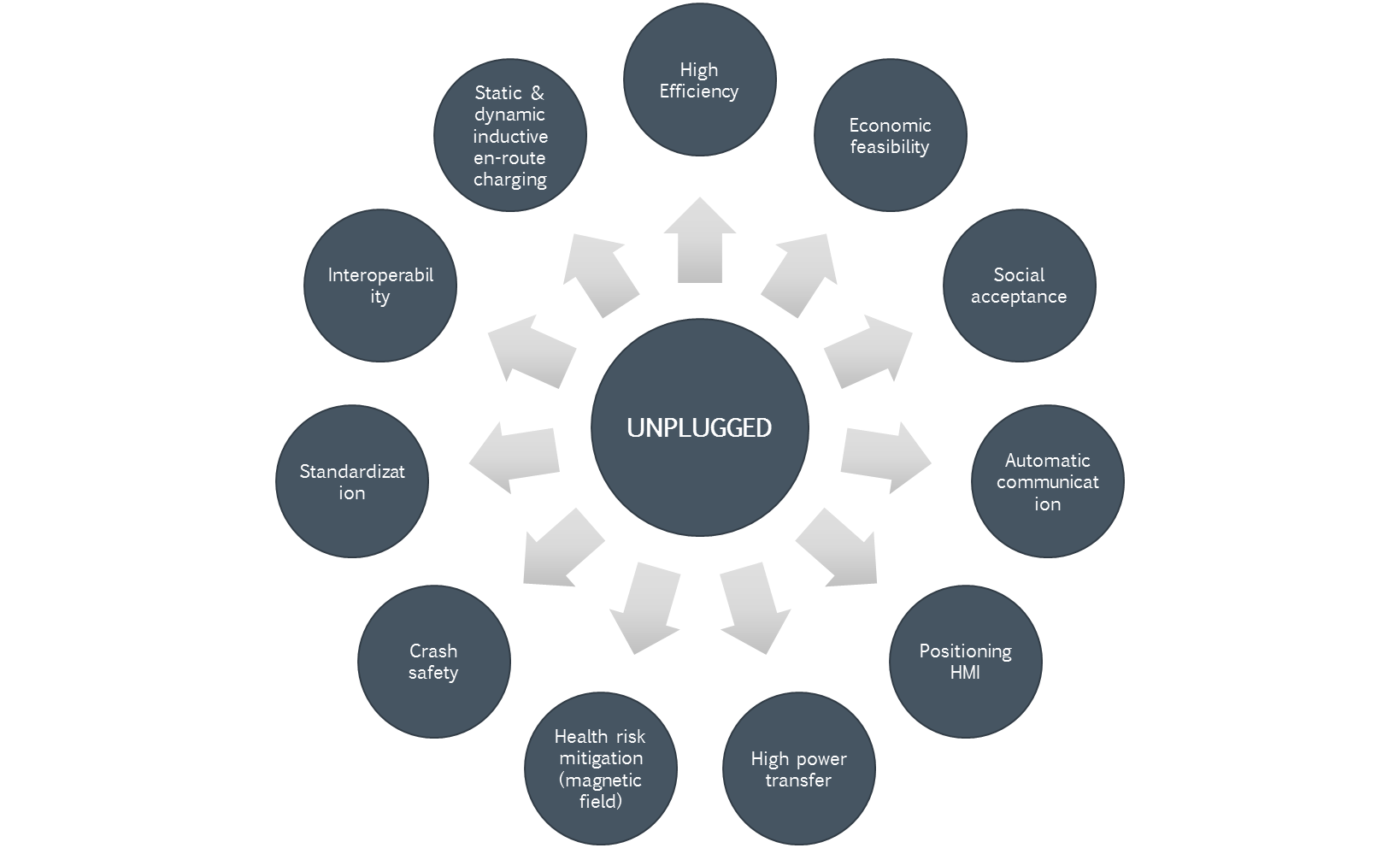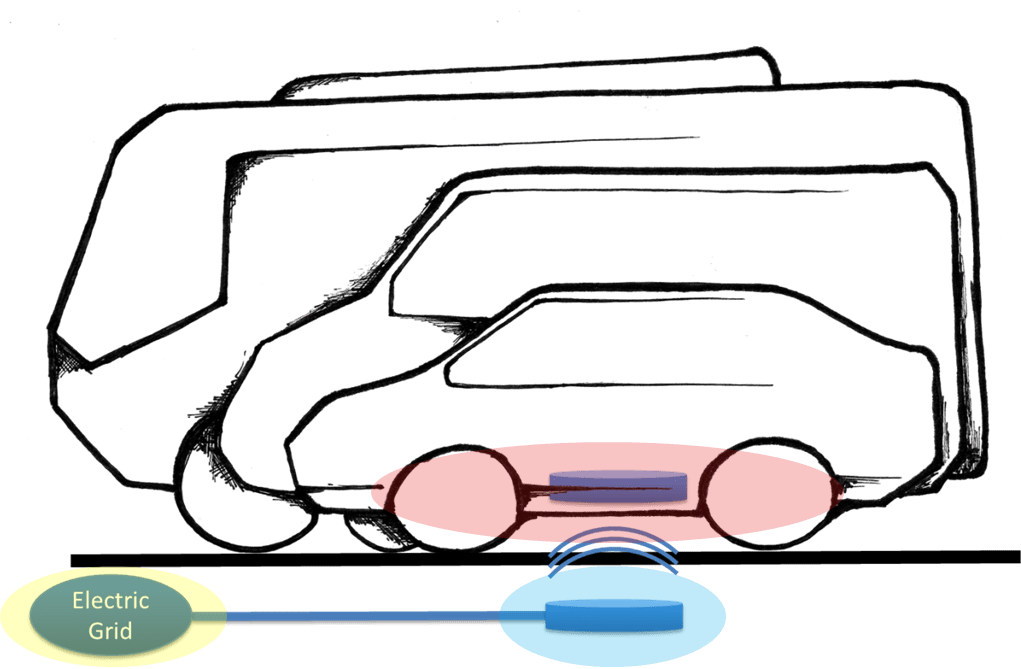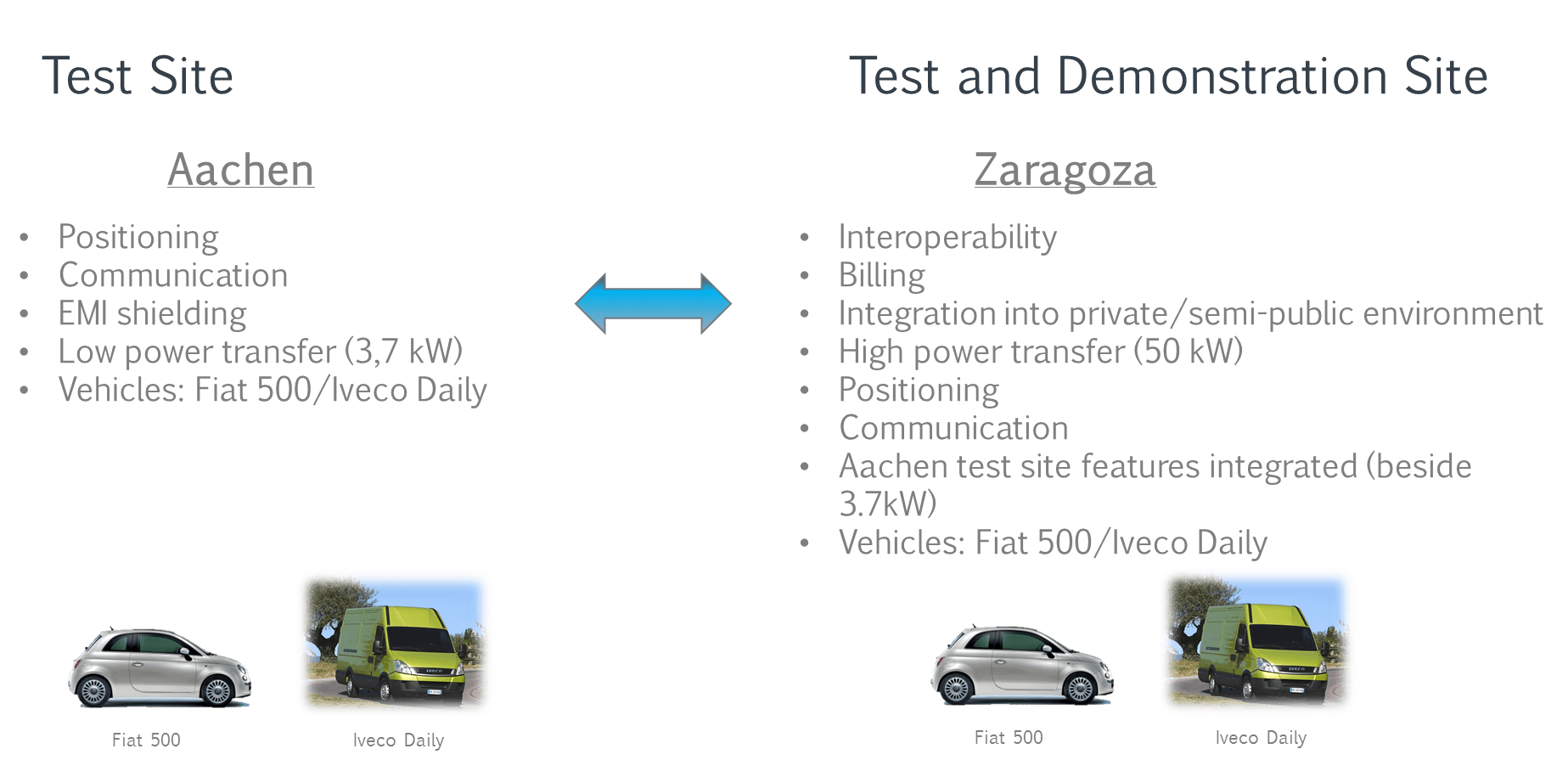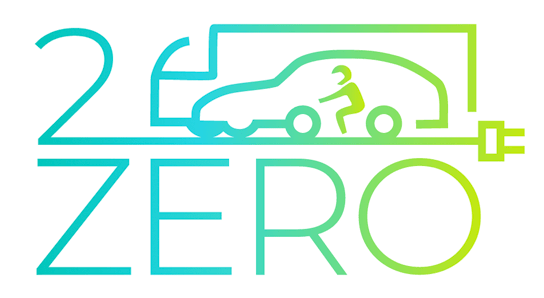UNPLUGGED – Inductive charging for Electric Vehicles (February 2014)

- Website: http://www.unplugged-project.eu
UNPLUGGED project (www.unplugged-project.eu – info@unplugged-project.eu) aims to investigate how the use of inductive charging of Electric Vehicles (EV) in urban environments improves the convenience and sustainability of car-based mobility. In particular, it will be investigated how smart inductive charging infrastructure can facilitate full EV integration in the urban road systems while improving customer acceptance and perceived practicality. UNPLUGGED will achieve these goals by examining in detail the technical feasibility, practical issues, interoperability, user perception and socio-economic impacts of inductive charging. As one special variant, inductive en-route charging will be investigated thoroughly.
Current scenario of charging in Electric Vehicles
Today electric vehicles (EV) are having a hard time being accepted by the customer and diffusing in the market. Even though many aspects of EVs seem making them very appealing (e.g. very low energy cost and zero tail pipe emissions) there are several concerns that people have on this technology:
- Range anxiety: Because of the limited range of EVs caused by the current relatively low capacity of batteries, the freedom of the driver, one of the major reasons to own a vehicle, is limited
- EVs require a significantly higher initial investment cost than vehicles with common combustion engines due to the high cost of the energy storage (battery)
- The EV batteries need to recharge frequently and hence the driver has to find a suitable recharging stations and has to plan the routes accordingly
The charging process itself is very time consuming and hence user-unfriendly.
Comparing conductive charging to inductive charging
This offers several advantages over the conductive (using a cable) charging method:
- It is easily operated and comfortable due to the automation of the charging process
- Since there is no need to plug-in a cable the driver will not have to get out of the car and get his hands dirty especially in rainy, snowy or muddy environments (which also do not affect the wireless inductive charging process).
- There is no risk that the user forget to plug in the vehicle at the end of the parking, losing the capability of a fit range for the following use of the car
- The system is safe against vandalism, misuse/abuse and environmental influences (e.g. humidity) because all devices are encapsulated in the vehicle and the ground
- There is no negative impact on the cityscape (all devices are hidden in the ground)
- Without having to manually connect the vehicle to the grid the availability of the EV for vehicle-to-grid applications (V2G) is higher (e.g. for using the vehicle’s battery to store excess energy in the grid)
These abovementioned advantages already prove the usefulness of (stationary) inductive charging compared to the currently more common conductive charging infrastructure. However inductive charging will offer many more possibilities in the future, especially concerning en-route charging.
The potential of inductive en-route charging
With inductive en-route charging, EVs could be charged while standing at the traffic light, the bus stop or the taxi stand while it should be impracticable with the conductive charging option. So, using wireless inductive charging, these short timeframes could be used to charge the EV and hence its range. The charging method above is called static inductive en-route charging because the vehicle is standing still while charging.
In addition, there is also the possibility to charge the vehicle while it is actually moving. This charging method is called dynamic inductive en-route charging. This charging method holds the potential of giving the driver virtually limitless range as long as he stays on paths specifically adapted for dynamic inductive en-route charging. This could lead to a reduction of battery size or the use of capacitors which would both lower the weight and the cost for the vehicle. The impact on the infrastructure has to be taken into account, so it has to be evaluated if or when, dynamic inductive charging is needed and preferable to only static inductive charging.
UNPLUGGED project description
Given the current challenges in mobility (mainly due to fossil fuels) and also the open issues that EV rises in relation to economic and social feasibility, the inductive charging technology could become a centrepiece if all of the different inductive charging solutions (stationary, static/dynamic en-route) are combined and used for their best specific purpose.
In this context, UNPLUGGED project aims to investigate how the use of inductive charging of Electric Vehicles (EV) in urban environments improves the convenience and sustainability of car-based mobility. In particular, it will be investigated how smart inductive charging infrastructure can facilitate full EV integration in the urban road systems while improving customer acceptance and perceived practicality. The main topics where UNPLUGGED addresses are depicted in Fig 1


Fig. 1: Topics tackled in UNPLUGGED project
Technical solution
Almost every Battery Electric Vehicles (BEVs), which is currently commercially available, comes with a wired battery charging system. However in a system with contactless battery charging, as shown in Fig. 2, all plugging is omitted for the customer. Instead, the energy transfer takes place contactlessly through devices integrated into the ground and the vehicle. These devices can be airtightly encapsulated having two main advantages compared to conductive systems: It is easier to reach a high IP rating (e.g. 6K9K) and the system is protected against vandalism.
Current inductive charging systems suffer from a lack of efficiency, slow power transfer rates, inadequate safety considerations and are not interoperable. All these factors influence each other and will have to be optimized simultaneously in order to make this technology feasible for public use.
These problems become even more challenging when instead of the stationary inductive charging above described we move on to static en-route inductive charging. Static en-route inductive charging describes all inductive charging that is carried out at charging points that lie on the driver’s route. This might include traffic lights, bus stops, taxi stands and so on. The actual power transfer does not work any differently from the stationary inductive charging (both static) but the time for the (re)charging and the proper positioning of the energy transfer units is much shorter. From the power grid’s point of view there is also a lack of information about how much energy will be needed for how long and at what location.
At this point with en-route charging not only do the technical challenges described above (stationary inductive charging) grow but a whole new set of questions appears involving technical and economic feasibility or even social impacts of this technology. However, As described in the beginning, one of the main issues right now is the lack of range with current batteries. With dynamic en-route inductive charging one could charge the battery while driving effectively extending the range and making it possible to use smaller (and lighter) batteries or even make use of different energy storage such as capacitors (lighter, cheaper and with a longer life than batteries but with limited capacity) or hybrid solutions.
The three different types of charging build on each other (stationary -> static en-route -> dynamic en-route) and in order to reach the goal of making BEVs become an actual alternative to conventional combustion engines we should start at the bottom with the problems of stationary charging and begin solving them.
UNPLUGGED project technical proposal addresses a variety of different types of vehicles, including car, taxis, light duty vehicles and buses.


Fig. 2: Interoperability aspects
Interoperability
One of the key issues to facilitate the deployment of inductive charging technologies for EVs is Interoperability, which covers several aspects:
- Among different vehicle OEM and models, for instance in features as positioning
- Among different power suppliers in the same country but also in other countries, which may affect payment solutions, concerning identification
- Among different classes of vehicles (cars, light duty, buses,…), which may affect the power of the station
- Among different types of recharging process, slow and fast
Demonstrators
We are building a stationary inductive charging station that will allow the testing activities. The architecture and main components are described in the following diagram


Fig 3, Inductive charging station with its main components
Initially the platform will be located in Aachen and managed by FKA, focusing mainly on the EV side of the charging system; later, it be used for the demonstration, located in Zaragoza, Spain, and managed by CIRCE, Endesa and Enel. All institutions will be in charge of coordinating the activities to guarantee the interoperability of the system with the final demo site in Zaragoza.


Fig 4, Sites for UNPLUGGED, different features.
Conclusions
UNPLUGGED vision will produce relevant benefits for businesses and the society
- Face the challenges of the development of innovative on route inductive charging technologies, allowing EV to meet the growing demand of vehicles with longer distance autonomy and with smaller, cheaper and less weight batteries at the same time.
- Contribute to stationary and on route inductive charging technologies by improving power transfer speed and efficiency, vehicle/coil positioning, magnetic and crash safety, inductive infrastructure devices protection against weather and vandalism.
- Provide mechanisms to dramatically increase the interoperability of solutions developed among the different stakeholders participating in Unplugged, having in mind and keeping it open to other initiatives and projects.
- Provide advances in the economic feasibility of the inductive charging technologies, both stationary and on route, by evaluating vehicle, infrastructure and power grid/utilities needs and TCO, as well as different billing possibilities
- Lead to better social acceptance of EVs and its required infrastructure by improving and demonstrating progress in users’ safety, comfort, ease of use, less impact in cityscape and better resilience to vandalism, as well as in users’ sense of freedom (one of the main reasons leading users to acquire vehicles)
Acknowledgments
UNPLUGGED project is co-funded by the 7th Framework Programme of the EC.


